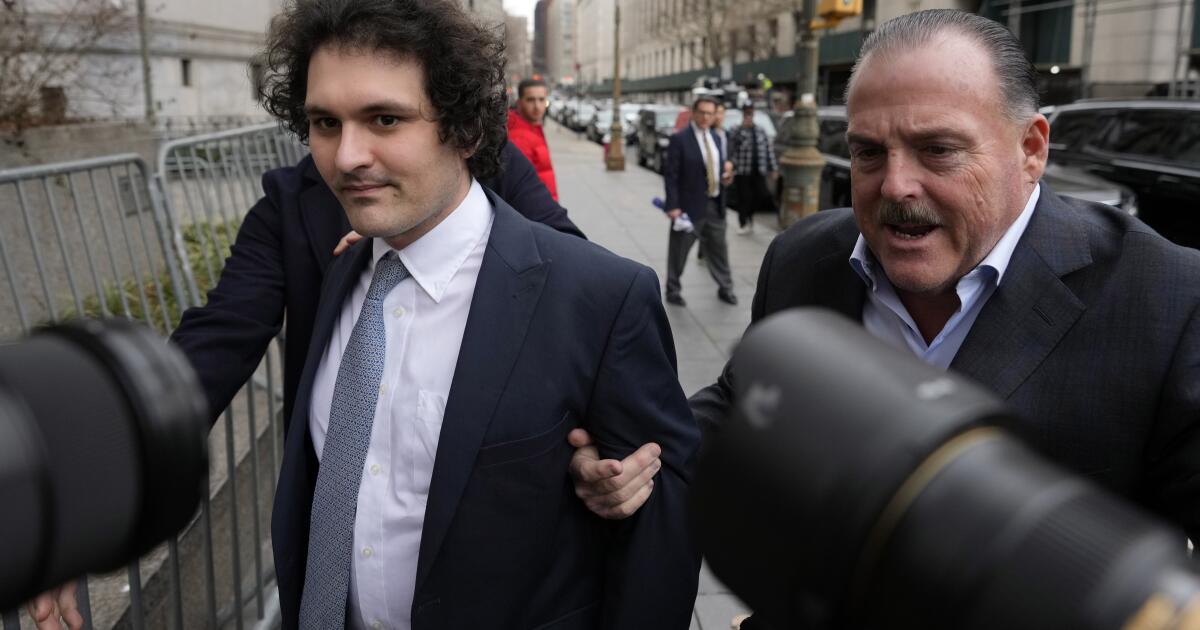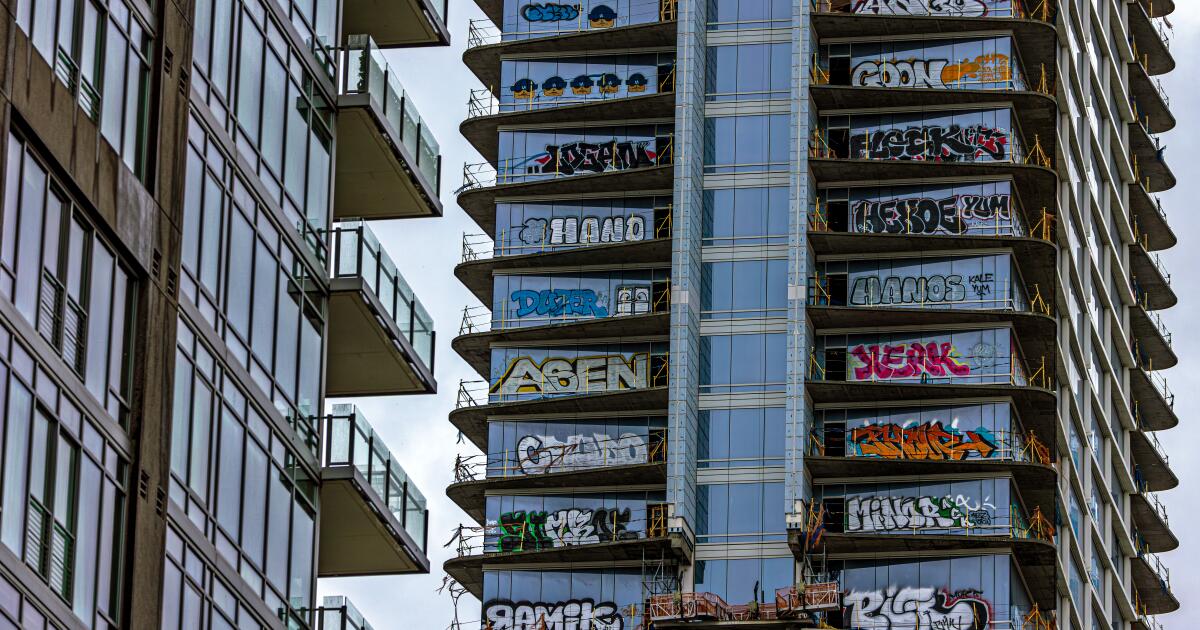Business
After Nearly Collapsing, Indian Billionaire’s Stock Is Back on the Rise

The Adani Group, a conglomerate that builds and operates ports, power lines and food factories across India, began the year nearly on top of the world — having increased in value tenfold over the previous two years. Its founder and chief executive, Gautam Adani, was ranked the second-richest man on Earth last summer, just behind Elon Musk.
Then it crashed even quicker than it had shot up. Hindenburg Research, a boutique investment firm, issued a report on Jan. 24 claiming the company had inflated its stock through financial gimmickry. That firm had bet that Adani’s shares would tank, and down they went: By the end of February, the Adani Group’s 10 publicly traded stocks had lost two-thirds of their value, a hit of nearly $150 billion. The report convinced nearly everyone to head for the exits.
The Adani Group hung on, however. This week it is riding its biggest rally since the downfall. Its flagship stock, Adani Enterprises, gained 31 percent in four days. Another unit of the empire, Adani Ports, has recouped its losses completely. Bullish voices say the whole group might rise by another 15 to 20 percent this year.
There were many factors behind the Adani Group’s survival over the past four months. It had loyal investors among Indian state-run institutions, and bargain hunters came in and bought stock on the low. The other reason: Adani had tangible assets, mostly infrastructure projects, that were there for everyone to see. These businesses, whatever they were worth, had value that many investors found appealing.
But the trigger to this week’s burst of optimism came indirectly from the Indian government.
On Friday, a committee assembled by India’s Supreme Court after the bombshell allegations in January said, in effect, that India’s financial regulators were doing the best they could in their oversight of the Adani Group, but had failed to penetrate the confusing ownership structures behind its funding. What’s more, they probably never will, having “drawn a blank.”
That is a frustrating situation for the agencies involved in protecting India’s capital markets and might give pause to many investors. But for investors sold on the Adani Group it came as sweet relief. The court asked the main regulator, known as the Securities and Exchange Board of India, to finish its business by Aug. 14, whether or not it manages to explain who owns the funds that helped Adani’s shares grow tenfold since 2021. Otherwise, the report said, its work might go on endlessly, “a journey without destination.”
The Adani Group did not immediately respond to requests for comment. It has called claims made by Hindenburg Research in January “baseless allegations based on imaginary fact patterns” and even “a calculated attack on India.”
One of the investors who bought into Adani heavily in March during the trough, Rajiv Jain of GQG Partners in Florida, bought even more as it surged this week, according to Bloomberg. Mr. Jain said his total stake in Adani companies was near $3.5 billion and he cited the value of Adani’s infrastructure businesses, which as a reason for his investment.
Beyond infrastructure, one of the Adani Group’s most valuable assets is something less tangible. Gautam Adani and Narendra Modi, India’s prime minister, have been working in tandem for decades. They came up through the ranks together in their home state of Gujarat, and Mr. Modi flew to New Delhi on a private jet belonging to Mr. Adani after he was elected to lead the national government.
Ever since the shadow of doubt fell upon his companies, Mr. Adani has kept a relatively low profile within India. He stayed busy abroad. He opened a new port in Haifa, Israel, where he posed with Mr. Modi’s friendly counterpart, Binyamin Netanyahu. And he did tours of Europe and the United States to assure investors that he was standing strong. But Mr. Modi himself, once ubiquitous by his side, has refused to mention Mr. Adani in public.
The findings from the Supreme Court’s committee suggest that the Adani Group can now relax as far as the Indian authorities are concerned. Without investigative powers that they lack, the regulators are incapable of pursuing the suspicions set in motion by Hindenburg Research in January. India’s political opposition, seizing on the connection between Mr. Adani and Mr. Modi, has been calling for a special parliamentary panel that might unearth more. But between the court and Mr. Modi’s parliamentary majority, they stand little chance.
The Adani Group’s position within India’s political economy looks strengthened, if not fully repaired. That is an important development for more than just the stock market’s winners and losers. Mr. Modi’s vision for India depends on building a great deal of infrastructure.
The country has already sped up and improved a record number of projects during his nine years in power. Airports, highways, power transmission and more are all drastically better and more plentiful, more so than other indicators like private investment, which economists say is lagging. Much of the funding comes from the government. But building needs private partners, too.
Hindenburg Research, which is in New York, had argued that the Adani conglomerate was artificially pumping up its valuations to raise money that it needed to cover its debts to investors abroad. Adani has taken action to pay down its debt load, but it still could attract scrutiny from foreign regulators.
But within India, Adani’s critics may need to alter their plans. Opposition parties complain that they have been prevented from talking about Adani and Mr. Modi in the press and even in India’s parliament. Adani’s local competitors and partners alike must reckon with the fact that its central place in Indian business remains secure.

Business
Nearly all FTX customers are getting their money back: What to know

Nearly all customers of FTX will get their money back, plus interest, after the cryptocurrency exchange imploded 17 months ago.
FTX, which filed for bankruptcy protection in November 2022, said in a court filing Tuesday that between $14.5 billion and $16.3 billion would be available for distribution.
Under the proposed reimbursement plan, customers and creditors owed $50,000 or less will get about 118% of their claim, according to the filing with the U.S. Bankruptcy Court for the District of Delaware. That covers about 98% of FTX customers.
After paying claims in full, the plan provides for supplemental interest payments to the extent that funds still remain. The interest rate for most creditors is 9%.
Although customers will be reimbursed the cash value of their cryptocurrency assets at the time of FTX’s collapse plus some interest, that’s far short of how much money those assets would be worth today given crypto’s resurgence. The price of bitcoin today, for instance, is about three times what it was in November 2022.
What is FTX?
FTX was co-founded in 2019 by Sam Bankman-Fried, once considered the golden boy of the crypto industry. As chief executive, he grew the exchange into one of the largest in the world, with more than 1 million users at its peak and endorsements from major celebrities including NFL quarterback Tom Brady and NBA star Stephen Curry.
Bankman-Fried, 32, was hailed as a positive force and trustworthy spokesperson for the emerging industry, especially as he rescued several failing crypto firms.
What happened to FTX?
FTX failed in spectacular fashion when users, worried about the exchange’s solvency, began pulling out their money en masse in 2022. The collapse triggered a surge in outflows across other global crypto exchanges, leading to a catastrophic fiasco.
FTX had a staggering shortfall at the time of its Chapter 11 filing, holding only 0.1% of the bitcoin and only 1.2% of the ethereum that customers believed it held, the company said in an announcement Tuesday.
What about Bankman-Fried?
Bankman-Fried was arrested in the Bahamas in December 2022 and extradited to the U.S., where he faced criminal charges. Eleven months later, a jury in federal court in Manhattan convicted him of fraud in a scheme that cheated customers and investors out of at least $10 billion.
Prosecutors said Bankman-Fried had misappropriated funds to fuel his quest for influence and dominance in the crypto world, and had illegally used money from FTX depositors to cover his expenses, which included luxury properties in the Caribbean, alleged bribes to Chinese officials and private planes.
“His crimes caught up to him. His crimes have been exposed,” Assistant U.S. Atty. Danielle Sassoon said during the monthlong trial. Sassoon said Bankman-Fried turned customer accounts into his “personal piggy bank” as up to $14 billion disappeared.
In March, Bankman-Fried was sentenced to 25 years in prison. It was a stunning downfall for the founder, who at one point was estimated to be worth $26 billion.
Where is the reimbursement money coming from?
The billions available to repay defrauded customers includes assets under the control of the debtors, the U.S. Department of Justice, authorities in Australia and the Bahamas as well as dozens of private parties.
“FTX has achieved this recovery level by monetizing an extraordinarily diverse collection of assets, most of which were proprietary investments held by the Alameda or FTX Ventures businesses, or litigation claims,” the company said.
The plan still has to be finalized in U.S. Bankruptcy Court.
The Associated Press was used in compiling this report.
Business
Graffitied skyscraper in downtown Los Angeles poised for sale

Oceanwide Plaza, the bankrupt, unfinished development in downtown Los Angeles that became a canvas for trespassing graffiti artists, is officially on the market.
The Chinese owners of the stalled residential, hotel and retail complex towering over Crypto.com Arena have hired real estate brokers to sell the property to buyers who could restart the project after work stopped in 2019. Taggers recently covered its outer walls with graffiti visible from far away.
Likely bidders for the property include large institutional investors such as Blackstone Inc. and BlackRock, and cash-rich overseas sovereign wealth funds from the Middle East, Asia and Europe, property broker Mark Tarczynski said.
“I think there’s a broad range of buyers,” he said, “but the pool of buyers is small because of the size of the project.”
Tarczynski is part of a team from real estate brokerage Colliers and Hilco Real Estate that will market the property, which fills a large city block on Figueroa Street across from the arena and LA Live.
An April appraisal by Colliers submitted in a bankruptcy case involving the project estimated the as-is market value at nearly $434 million, Bloomberg said. Colliers also projected a cost of $865 million to complete the buildings, which are 60% finished.
Real estate developments stall from time to time as developers run out of money; but rarely do they fail in such a high-profile manner as Oceanwide Plaza, which was supposed to be a glamorous addition to the skyline and center of activity in the bustling sports and entertainment district of downtown’s South Park neighborhood.
Beijing-based Oceanwide Holdings bought a sprawling parking lot across from the arena in 2014 and soon set to work on a three-tower complex intended to house luxury condominiums and apartments, and a five-star hotel supported by upmarket stores and restaurants. It was also to include a massive electronic sign intended to help bring a Times Square flavor to Figueroa Street.
The international company ran into financial problems that coincided with a Chinese government decision to restrict the flow of outbound investment. Work stopped on Oceanwide Plaza in early 2019 as contractors building it stopped getting paid.
In February, general contractor Lendlease filed a petition for the involuntary Chapter 11 bankruptcy of Oceanwide Holdings to force a sale of the property and pay creditors who were demanding almost $400 million. Major creditors include Lendlease and EB-5 visa investors, who helped fund construction. Oceanwide also owes back taxes to Los Angeles County and money to repay the city for security put in place in response to the graffiti and other incidents including BASE-jumping paragliders leaping form the towers.
The city allotted nearly $4 million to remove graffiti and secure the property in February. The property is now surrounded by a tall metal fence.
While some real estate observers have speculated that it might make sense to raze the towers to make way for a different development, Tarczynski predicts that the next owner will finish the existing project.
“It’s about two-thirds of the way done, with about $1.2 billion already invested in it,” he said. “Why would you tear down a perfectly good project? It’s unimaginable.”
Oceanwide’s location in the center of downtown’s sports and entertainment district should help entice investors to finish the complex, Tarczynski said.
“Every bit of the potential synergy between Crypto.com Arena, LA Live and Oceanwide Plaza still exists,” he said, “and there is a huge demand for housing and also hotel demand. This remains an attractive project.”
The brokerage team expects to distribute financial information and other facts about the project to qualified buyers early next month and call for offers by the end of July, Tarczynski said. “We hope to be in escrow by October.”
Business
Disney and Warner Bros. Discovery join together for new streaming bundle

There’s nothing like a streaming war to bring competitors together.
Walt Disney Co. and Warner Bros. Discovery will offer a new streaming bundle that allows subscribers to access Disney+, Hulu and Max all in one deal, the two companies said Wednesday. The bundle will be available in the U.S. starting this summer and can be purchased through any of the three streaming platforms’ websites.
It will be offered in both ad-free and ad-supported options. Pricing has not been disclosed but will presumably represent a discount of the collective services.
The two companies billed the joint bundle offering as a “first of its kind.” It comes on the heels of Disney’s integration of Hulu into its Disney+ service, which is intended to help increase viewer engagement and reduce churn on Disney+, which has 117.6 million subscribers.
Hulu, meanwhile, has 45.8 million subscribers. Warner Bros. Discovery has 97.7 million subscribers across its streaming platforms, including Max, HBO Max and discovery+, as well as its premium pay-TV services such as HBO.
“This incredible new partnership puts subscribers first, giving them access to blockbuster films, originals, and three massive libraries featuring the very best brands and entertainment in streaming today,” Joe Earley, president of Disney Entertainment’s direct to consumer division, said in a statement.
The Disney-Warner Bros. Discovery team-up comes as media and entertainment companies continue to incur enormous costs to ramp up their own streaming services while subscriber sign-ups have significantly slowed in the last year. Major media companies recognize that they can’t keep spending billions of dollars to bulk up their program offerings — but they need more heft to compete against Netflix and Amazon’s Prime Video.
The decision to offer several services — owned by two media rivals — for one fee is kicking off an expected trend of consolidation in the streaming space. Analysts have long argued that there are too many services.
Even Warner Bros. Discovery Chief Executive David Zaslav was prepared for the possibility back in 2020.
“Will there be three? Will there be four? There’s not going to be seven,” he told CNBC at the time. “We think there will be a re-bundling. Our job is to make sure we’re absolutely essential … But I’m not sure anybody has all the cards.”
Zaslav wasn’t alone in that thinking.
Last fall, Comcast and Paramount Global managers held talks about combining Paramount + with NBCUniversal’s Peacock in the U.S. to bolster their offerings to consumers, according to three people familiar with the talks but not authorized to speak publicly. The talks lapsed because Paramount’s controlling shareholder, Shari Redstone, was interested in pursuing a separate deal to sell the company and didn’t want to encumber an important asset.
The nation’s two largest cable companies, Comcast and Charter Communications, combined forces last fall to offer the Xumo Stream Box, which gives customers a device that allows easier access to subscription-based and ad-supported streaming apps, including Apple TV+, Netflix, Amazon Prime, Disney+, Hulu and Max.
Not to be outdone, Prime Video also offers multiple streaming services as add-ons.
More recently, Disney, Warner Bros. Discovery and Fox Corp. disclosed plans to roll out a sports-centric streaming service this fall. The service has not announced a name, leaving observers to colloquially refer to it as “Spulu,” a portmanteau of “sports” and “Hulu.”
-

 World1 week ago
World1 week agoStrack-Zimmermann blasts von der Leyen's defence policy
-

 Politics1 week ago
Politics1 week agoThe White House has a new curator. Donna Hayashi Smith is the first Asian American to hold the post
-

 Politics1 week ago
Politics1 week agoStefanik hits special counsel Jack Smith with ethics complaint, accuses him of election meddling
-

 Politics1 week ago
Politics1 week agoDemocratic mayor joins Kentucky GOP lawmakers to celebrate state funding for Louisville
-

 World1 week ago
World1 week agoTurkish police arrest hundreds at Istanbul May Day protests
-

 News1 week ago
News1 week agoVideo: Police Arrest Columbia Protesters Occupying Hamilton Hall
-

 Politics1 week ago
Politics1 week agoNewsom, state officials silent on anti-Israel protests at UCLA
-

 News1 week ago
News1 week agoPolice enter UCLA anti-war encampment; Arizona repeals Civil War-era abortion ban














